Table of Contents
Imagine a scenario wherein you’re the captain of your ship, cruising through the expanse of the ocean. One minute, you’re gliding along smoothly; the next, a storm could come out of nowhere. To make sure you stay on course and reach your destination safely, you need a guiding compass that gives you clear, reliable direction.
In the world of business, this guiding compass is your financial KPIs—Key Performance Indicators. Just like a compass, these KPIs help you steer your business towards success by offering insights into where you stand financially. They show you what’s working, what needs attention, and how to adjust your course if necessary.
But here’s the thing: with so many financial metrics out there, how do you know which ones are the true guiding stars? That’s where the top 5 financial KPIs come in. These five key metrics give you a holistic view of your company’s financial health, allowing you to make smarter, more informed decisions.
Let’s dive in and explore these KPIs—after all, it’s your journey, and understanding these top 5 financial metrics can make all the difference in getting to your destination with confidence.
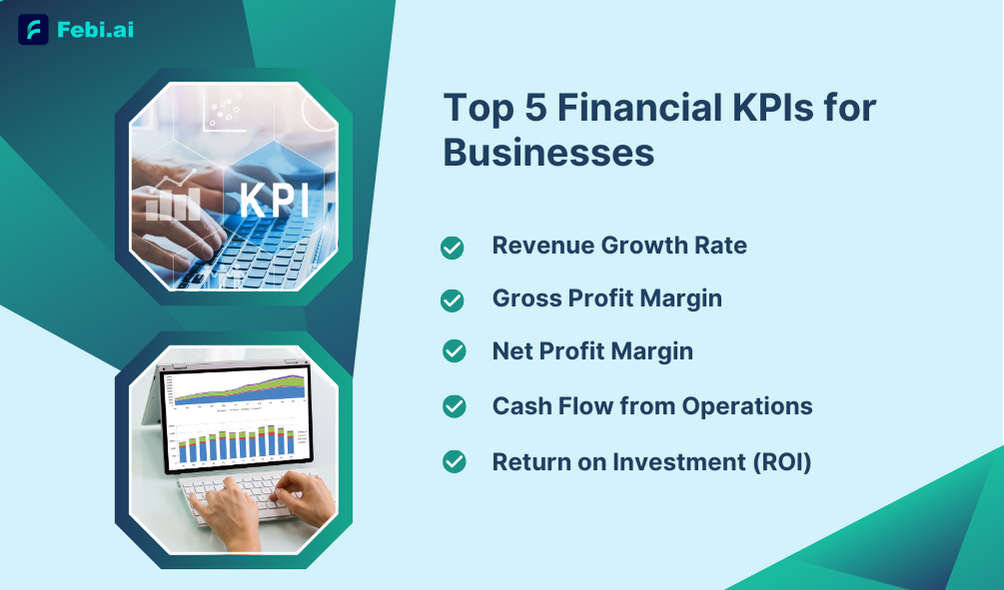
1. Revenue Growth Rate
Let’s start with something simple: growth. When you start your venture, you want to know that you’re moving in the right direction, right? Revenue Growth Rate is your first sign that things are heading in the right direction. It’s the percentage increase in your business’s revenue over a set period—whether that’s a month, a quarter, or a year.
Why does this matter? Well, if you’re seeing a positive revenue growth rate, it means your business is expanding, your products or services are resonating with customers, and your sales strategies are paying off. On the flip side, if revenue growth is flat or negative, that’s your cue to dig deeper and see what’s going wrong.
How to Calculate:
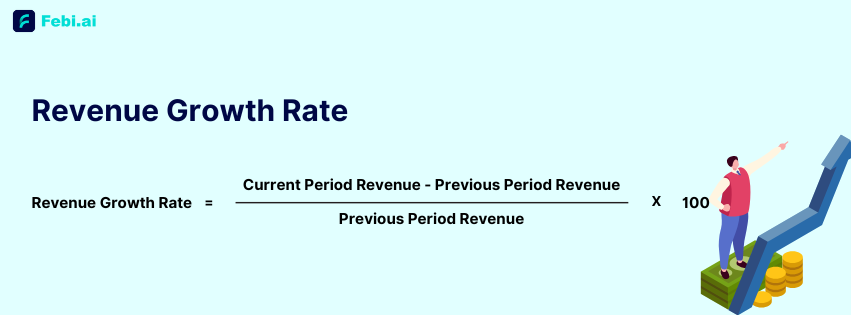
For example, if your revenue last year was INR 500,000 and this year it’s INR 600,000, your growth rate would be 20%.
What to Do with It:
- Track this regularly to gauge how well your business is growing.
- Keep an eye on trends over time to spot any patterns in your growth, and tweak your strategies when needed.
- Watch your customer acquisition costs to make sure your growth isn’t coming at an unsustainable price.
- Set growth goals each quarter to keep everyone on track and motivated, making sure your team’s efforts match your revenue targets.
- Compare your growth to industry standards to see if you’re keeping pace or lagging behind.
2. Gross Profit Margin
Next up, we’ve got Gross Profit Margin as a financial management KPI. Picture this as the fuel in your ship. It tells you how much profit you’re making after covering the direct costs of producing your products or services. The higher your gross profit margin, the more money you have left over to fuel growth, reinvest in your business, and cover other expenses.
Why is this important? Because if your gross profit margin is too low, it could mean you’re spending too much on production, or that your pricing strategy might not be aligned with your costs. Essentially, this KPI helps you understand how efficient your business is at creating value.
How to Calculate:
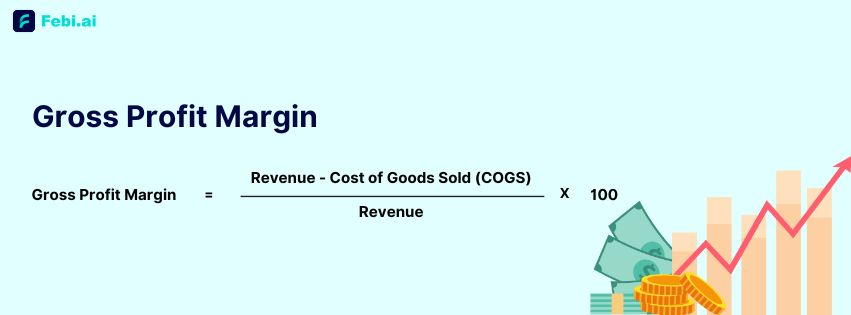
For instance, if your company makes INR 1 million in sales, but your cost of goods sold (COGS) is INR 600,000, your gross profit margin would be 40%.
What to Do with It:
- Use this metric to identify inefficiencies in production or delivery.
- Look for areas to trim costs—take a step back and see where you can cut back on production or delivery costs without hurting quality.
- Check how your margins stack up against competitors—if your margins are lower than others in your industry, it might be a sign to adjust your pricing or processes to stay competitive.
- Regularly assess whether you can adjust your pricing to boost your margins without losing customers.
3. Net Profit Margin
This is another one of the most important ones in the top 5 financial metrics. While gross profit margin helps you understand how efficiently you’re producing your products, Net Profit Margin takes it a step further. This is your “take-home” pay—the percentage of revenue that’s left after all expenses, including taxes, operating costs, and interest, have been deducted.

Why does this matter? Simply put, it shows you how much profit your business actually keeps after all costs are covered. If your net profit margin is healthy, that means you’re effectively managing both your revenue and your costs. It also gives you a clear picture of how well you’re converting sales into actual profit.
How to Calculate:
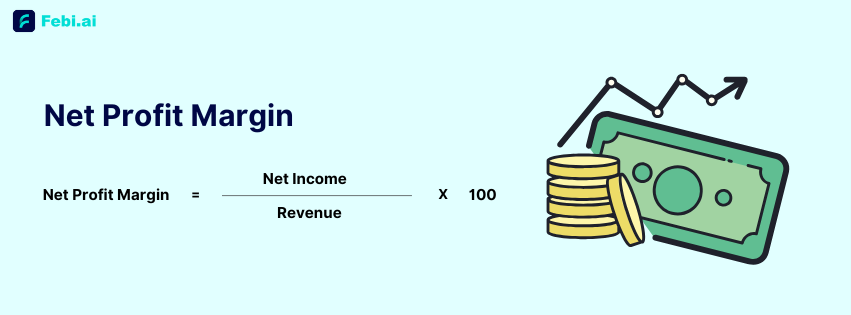
For example, if your business makes INR 1 million in revenue and your net income is INR 150,000, your net profit margin would be 15%.
What to Do with It:
- Track this regularly to ensure that your expenses are under control.
- If your margin is lower than you’d like, look for areas to cut costs or reevaluate your pricing.
- Keep an eye on your spending—if your profits aren’t as high as you want, take a moment to look at where your money’s going. You might find a few places to cut back.
- Check your pricing, this means if your costs are creeping up, maybe it’s time to tweak your prices a bit. Just make sure you’re still offering value while keeping those margins healthy.
- Look for ways to work smarter. For instance, even small tweaks in how you run things can add up to big savings. A little efficiency goes a long way.
- Take a second to review your big costs (those big chunks that are burning a hole in your pocket)—things like rent or employee salaries can eat into profits. Is there room to renegotiate, or could you streamline some of these expenses?
4. Cash Flow from Operations
Here’s a fact: you can be profitable on paper but still run into cash flow problems if your business isn’t bringing in enough cash. That’s where Cash Flow from Operations comes in. This falls in the top 5 business KPIs list and for good reason! KPI shows you the actual cash generated by your business from its core activities, excluding any financing or investment-related activities.
Why does this matter? Positive cash flow means your business has enough money to pay its bills, invest in growth, and cover day-to-day expenses. If cash flow is negative, you might be profitable on paper but struggling to meet obligations or seize new opportunities.
How to Calculate:

For instance, if your net income is INR 500,000, depreciation is INR 50,000, and you have a INR 30,000 increase in working capital, your CFO would be INR 580,000.
What to Do with It:
- Regularly monitor this to ensure you’re generating enough cash from your core operations.
- Keep an eye on incoming payments. If your cash flow feels tight, it might be time to chase up on any overdue invoices or offer a little incentive for clients to pay faster.
- Take a closer look at your expenses. Check out where your money’s going each month and see if there are any unnecessary costs you could put off or cut back on to keep things running smoothly.
- Be ready for slower months. Cash flow can be a bit unpredictable, especially for businesses that deal with seasons. It’s always smart to have a backup plan. This could be like setting aside some savings or securing a credit line—you know for those times when things slow down.
- If your cash flow is negative, look into ways to speed up receivables or slow down payables to improve liquidity.
5. Return on Investment (ROI)
Finally, every business makes investments—whether it’s in marketing campaigns, product development, or new equipment. Return on Investment (ROI) helps you assess how effective those investments are in generating a profit.

Why is ROI important? It helps you evaluate whether your investments are paying off. If your ROI is high, it means you’re making smart decisions and getting good returns. If it’s low, you’ll need to reassess where and how you’re investing your resources.
How to Calculate:
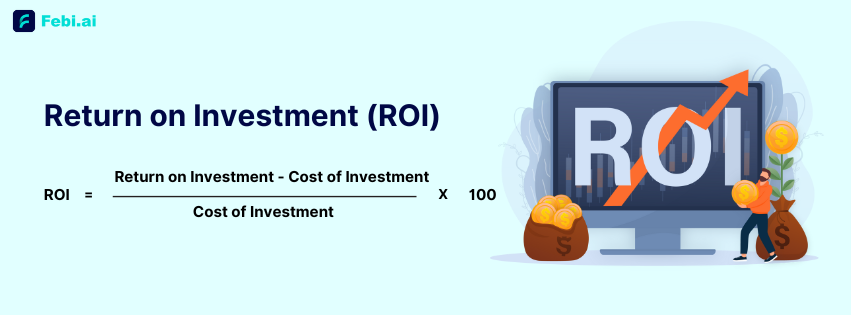
For example, if you invested INR 100,000 in a new marketing campaign and earned INR 150,000 in additional revenue, your ROI would be 50%.
What to Do with It:
- Use ROI to evaluate the effectiveness of major business investments.
- If ROI is low, reconsider where you’re putting your money or tweak your strategy to boost results.
- Keep an eye on the returns from different investments. Whether you’re putting money into marketing, new products, or tech, track which ones are really paying off and which ones might need a little rethink.
Conclusion
At the end of the day, tracking the top 5 financial KPIs isn’t just about crunching numbers. It’s about gaining a clear, real-time understanding of how your business is performing. These KPIs act as your navigational tools, guiding you through the complexities of running a business.
By regularly monitoring revenue growth rate, gross profit margin, net profit margin, cash flow from operations, and ROI (Return on Investment), you’ll have the insights you need to make smarter decisions, adjust course when necessary, and keep your business heading in the right direction.
So, as you steer your business toward success, make sure these top 5 financial kpis are always in sight—because with the right metrics, you can confidently navigate even the roughest waters.
How do you currently track your financial management KPI?










